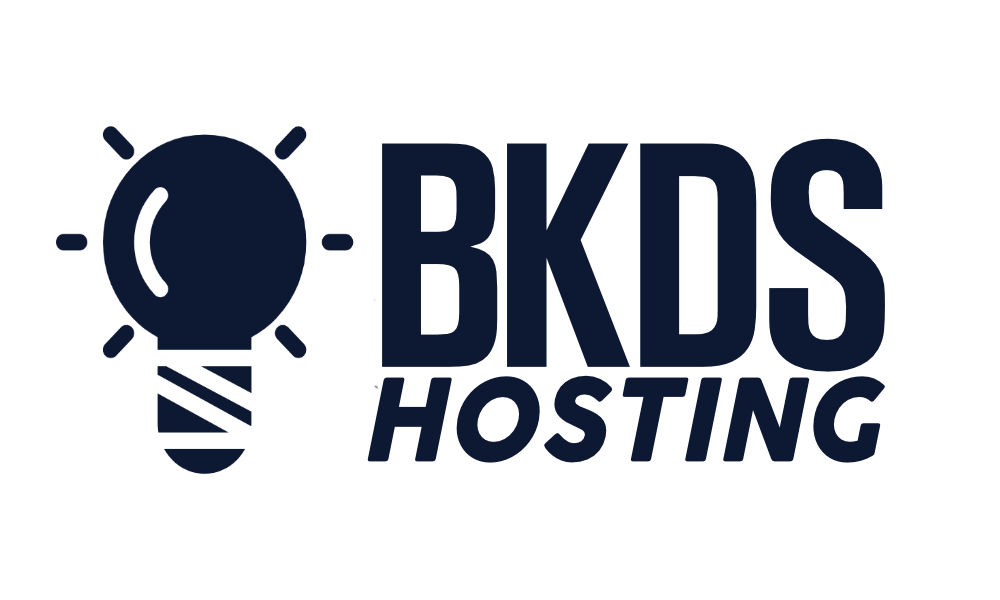In the dynamic world of digital commerce, maintaining a stable and accessible website is paramount for any small business. The continuity of online operations is directly linked to a company's reputation, client trust, search engine ranking, and ultimately, its bottom line. Employing strategic measures to prevent website downtime is thus a crucial task, one that requires a careful understanding of various key factors. In the forthcoming discussion, we will explore 11 critical tips, that encompass a range of preventative techniques from choosing reliable hosting providers, regular uptime monitoring, to the importance of regular backups. By the end of this comprehensive exploration, you will be equipped with valuable insights to help you navigate the challenges of maintaining an uninterrupted online presence.
Understanding Website Downtime

Website downtime, a critical aspect in the digital realm, refers to those unfortunate instances when a website becomes inaccessible or unavailable to its users due to various factors such as technical glitches, scheduled maintenance, or server complications. Understanding website downtime is an integral part of managing any online platform, particularly for small businesses that rely heavily on their digital presence.
Downtime results in users being unable to access a website's content, causing frustration and potentially leading to a loss of trust or business. It can also negatively impact a website's performance metrics, affecting SEO rankings and overall digital strategy success. Hence, preventing website downtime is a critical task, requiring vigilance and proactive management.
Monitoring website uptime, the counterpoint to downtime, is vital to swiftly identify and address any issues. This involves tracking the operational status of the website, detecting outages, and implementing immediate remediation measures. Advanced technology tools can aid in this process, providing real-time insights and automated alerts to enable prompt action.
In essence, understanding and managing website downtime is a cornerstone of a robust digital strategy for small businesses. Implementing effective measures to prevent website downtime not only ensures smooth operations but also enhances user experience and fosters business growth.
The Impact of Downtime on Businesses
Building on the understanding of website downtime, it's equally crucial to comprehend its direct consequences on businesses, notably the potential revenue losses and negative brand implications. Small business website downtime can lead to significant financial setbacks as a result of lost sales opportunities and advertisement revenue, especially for eCommerce platforms.
Moreover, the impact of downtime on businesses extends beyond immediate financial loss. Persistent downtime issues can diminish the credibility of your brand, thereby eroding customer trust and loyalty. This can lead to long-term customer loss, which is a costly consequence for any business, small or large.
In the realm of digital marketing, downtime can also negatively affect your SEO efforts. Search engines prioritize sites with high availability and low downtime, meaning your site's ranking could be jeopardized if it is constantly down.
To prevent downtime and its costly implications, businesses must invest in reliable website hosting services, perform regular website maintenance, and have a disaster recovery plan in place. By doing so, businesses can ensure their website remains accessible and reliable, thereby preserving revenue streams, brand reputation, and customer satisfaction.
Choosing a Reliable Hosting Provider

To mitigate the adverse effects of website downtime, selecting a reliable hosting provider is paramount, a process that involves several crucial considerations. A fundamental step is to conduct thorough research and read online reviews to gauge the reliability of a hosting provider. This proactive approach allows businesses to anticipate and avoid potential service interruptions.
A reliable hosting provider is distinguished by its uptime guarantee and responsive support. The uptime guarantee is a commitment to maintain the website's accessibility for a specified percentage of time, typically above 99%. This guarantee not only offers peace of mind to businesses but also reflects the provider's confidence in their infrastructure.
Responsive support is another vital aspect when choosing a reliable hosting provider. Their availability during an unexpected downtime can significantly reduce the negative impact on your business operations.
Moreover, utilizing hosting uptime monitors like CodeinWP can be beneficial. These tools provide comparative availability statistics of different hosting providers, assisting in making an informed decision. Regular monitoring of your website's uptime also helps evaluate if your chosen provider is consistently meeting its minimum uptime guarantee, thus ensuring the continuity and stability your business website requires.
Importance of Regular Uptime Monitoring
Regular uptime monitoring plays a critical role in mitigating website downtime, which can detrimentally impact user experience, brand reputation, and revenue flow. The selection of a dependable monitoring tool is a pivotal decision, as it should effectively provide real-time alerts and comprehensive data for prompt issue resolution. Establishing consistent monitoring practices ensures the proactive identification of potential issues, thereby allowing businesses to maintain a high-quality online presence and foster customer trust.
Uptime Monitoring Benefits
Why is regular uptime monitoring pivotal for small businesses, you may wonder? To start, uptime monitoring is instrumental in identifying and addressing downtime issues promptly, helping to prevent website downtime and potential loss of revenue.
- Prompt issue detection: It enables quick detection of any small business website downtime, allowing for swift resolution.
- Proactive Alerts: Monitoring provides alerts through various channels such as email, SMS, and mobile app notifications, enabling businesses to respond proactively.
- Trust and credibility: Ensuring a reliable online presence helps maintain credibility and trust, critical factors in today's digital landscape.
Choosing Reliable Monitoring Tools
Selecting an efficient and trustworthy monitoring tool is an essential step in guaranteeing your small business website's uptime, with platforms such as Pingdom, Jetpack, and BlogVault offering robust solutions. These uptime monitors not only provide real-time monitoring service but also deliver immediate alerts through email, SMS, or third-party integrations, helping in taking swift action to maintain website uptime.
| Monitoring Tools | Key Features |
|---|---|
| Pingdom | Real-time monitoring, performance insights |
| Jetpack | Downtime alerts, WordPress integration |
| BlogVault | Uptime tracking, website backup |
Going for a comprehensive solution like BlogVault can provide additional benefits such as website backup. Regularly using these tools ensures a reliable online presence, a critical factor for any innovative small business aiming for growth.
Implementing Consistent Monitoring Practices
Having chosen a reliable monitoring tool, it is imperative to implement consistent monitoring practices to ensure the smooth operation of your small business website. Regular uptime monitoring provides an early warning system to flag downtime issues, enabling swift remedial action to prevent small business website downtime.
- Identify and Address Issues Timely: By implementing consistent monitoring practices, you can identify performance and downtime issues promptly, allowing for quick resolution.
- Utilize Effective Tools: Tools like Pingdom, Jetpack, or BlogVault can be used to efficiently monitor your website's uptime.
- Set Up Alerts: Establish monitoring alerts through various channels such as email, SMS, and mobile app notifications for real-time updates on your website's status.
In essence, regular and consistent monitoring is pivotal to maintaining a positive user experience and preventing potential revenue loss.
Selecting Secure and Compatible Plugins
To ensure robust website performance and security, it is crucial to thoroughly vet potential Plugins and Themes for known incompatibilities, regular updates, and PHP version requirements. In the diverse universe of WordPress plugins, a systematic examination is necessary to identify those that are not only feature-rich but also consistently updated and in sync with your PHP environment. These factors significantly impact website performance and security.
The WordPress Plugin Directory and Theme Directory are valuable resources for verifying plugin compatibility and tracking the latest updates. These directories provide detailed insights into the track record of a plugin or theme, aiding in the selection of secure and reliable elements for your site.
It is also paramount to ensure that the chosen plugins and themes do not conflict with each other or the WordPress core. This requires consistent monitoring and updating, integral components in maintaining website security and compatibility.
Ensuring Security With Regular Updates

Building upon the necessity of selecting secure plugins and themes, it becomes equally vital to prioritize regular updates, a practice that significantly bolsters website security. Regular updates not only enhance the functionality of your site but also solidify the security features, ensuring the cyber resilience of your business.
- Regular Updates: Regularly updating your website's software, themes, and plugins is crucial. This introduces new security features and patches known vulnerabilities, thereby securing your site against potential threats.
- Automated Updates: For a more innovative approach, consider automating the update process. Many hosting platforms offer automatic updates as part of their package, reducing the manual effort and ensuring timely updates.
- Backup and Testing: Before implementing any update, ensure that you backup your site. This precautionary step safeguards your data in the event of any issues during the update. Following an update, thorough testing is necessary to confirm that all aspects of the site are functioning correctly and securely.
Timely Renewal of Domain Registration
Navigating the maze of online operations, the timely renewal of domain registration emerges as a pivotal strategy to circumvent potential website downtime. The lapse in Domain Name Registration can lead to a temporary or permanent shutdown of your website, disrupting your business operations. Hence, to Renew Your Domain without fail is a critical task.
To ensure seamless domain registration, set up auto-renewal options with your domain registrar. This automated system will renew your domain before it expires, ensuring continuous website uptime. It's also recommended to regularly check the expiration date of your domain registration and initiate manual renewals if needed.
Keeping your contact information updated with the domain registrar is another key step. This ensures that you receive timely renewal reminders and notifications. An old, inactive email account can lead to missed reminders, resulting in unexpected domain expiration.
Lastly, consider multi-year domain registration. It not only reduces the frequency of renewal but also minimizes the risk of potential lapses. This innovative approach saves time and resources, while ensuring your website remains live and functional. Remember, a smoothly operating website is pivotal to the success of your online business.
Optimizing Website for Faster Loading

While ensuring continuous website uptime through timely domain renewal is crucial, it's equally important to optimize your website for faster loading to provide an efficient user experience. With the rising user expectations for instant digital gratification, site speed has become an essential factor in delivering a satisfactory user experience and improving your website's SEO ranking.
- Image Optimization: High-resolution images contribute significantly to slow page loading. Minimize image sizes without compromising their quality to enhance speed optimization. Tools like TinyPNG and JPEG Optimizer can be quite effective.
- Enable Browser Caching: Browser caching stores website data on a visitor's device, reducing load times on subsequent visits. This not only enhances site speed but also saves bandwidth and server resources.
- Compression of Files: Compress CSS, JavaScript, and HTML files that are larger than 150 bytes. GZIP compression or plugins like WP Rocket can be used for this purpose.
Implementing these strategies for optimizing website for faster loading will significantly benefit user experience and overall website performance. Remember, speed optimization is a continual process that requires regular monitoring and tweaking to ensure optimal results.
The Role of Regular Backups
In the event of unexpected website downtime, regular backups play a crucial role in swiftly restoring your website to its functional state, thereby minimizing data loss and downtime impact. A meticulously planned backup strategy prevents small business website downtime, ensuring that business operations are back up and running in minimal time.
Regular backups should be an integral part of your website maintenance routine. This involves systematically storing your website's data, including databases, files, and multimedia content, in a secure, off-site location. In a scenario where your website experiences a technical glitch, cyber attack, or server failure, these backups serve as a lifeline, facilitating prompt recovery and mitigating the potential damage to your business operations, customer trust, and brand reputation.
To ensure consistency and reliability, consider implementing automated backup solutions. These innovative tools can schedule regular backups, thereby reducing the risk of human error and freeing up your time for other strategic tasks. An effective backup strategy, complemented by cutting-edge technology, provides a robust safety net for your website during unexpected technical issues, ultimately preventing prolonged website downtime and safeguarding your small business's digital presence.
Using Content Delivery Networks

To enhance website performance and mitigate the risk of downtime, particularly during traffic surges, implementing a Content Delivery Network (CDN) is a strategic move for small businesses. Using content delivery networks enables the distribution of the traffic load across multiple servers, significantly reducing the burden on the hosting server. This in turn, curtails the probability of downtime due to server overload.
The following points demonstrate the benefits of CDNs in preventing small business website downtime:
- CDNs can cover minor downtime episodes by serving from cache. This reduces reliance on the hosting server during downtime, enhancing website availability.
- The Time-To-Live (TTL) settings in CDNs determine how long cached files are served. By strategically setting the TTL, the impact of downtime can be minimized.
- Implementing a CDN allows for effective downtime monitoring. Early identification of potential issues allows for proactive measures, preventing prolonged website downtime.
Innovation-driven companies can leverage content delivery networks (CDNs) to maintain their online presence, even during high traffic periods. By utilizing CDNs, small businesses can ensure a seamless browsing experience for their customers, thereby bolstering their digital reputation.
Preparing for Unexpected Downtime
Building on the idea of utilizing CDNs to maintain website availability, a comprehensive approach to preventing unexpected downtime should also include robust backup systems, a well-devised disaster recovery plan, a reliable hosting infrastructure, and regular stress testing.
Backup systems are crucial for quickly restoring data in the event of unexpected website downtime, mitigating losses and preserving the customer's online experience. A disaster recovery plan, on the other hand, serves as a blueprint for how to respond to severe incidents. It outlines the steps to be taken, thereby minimizing the impact on business operations and facilitating a swift return to normalcy.
Investing in a reliable hosting infrastructure is equally important. This ensures the ability to handle unexpected surges in website traffic, reducing the risk of website crashes and enhancing the overall user experience. Regularly conducting stress tests is another vital strategy in preparing for unexpected downtime. These tests help identify potential vulnerabilities and weak points in the website's infrastructure, thereby enabling preemptive actions to prevent small business website downtime.
Conclusion
In conclusion, small businesses can significantly mitigate the risk of website downtime by employing a combination of strategies. These include choosing a reliable hosting provider, consistently monitoring website uptime, carefully selecting plugins, optimizing website speed, and ensuring regular backups. Utilizing content delivery networks and preparing for unexpected downtime further safeguard online presence. Implementing these measures forms a comprehensive approach to prevent website downtime, thereby safeguarding revenue and maintaining brand credibility.

